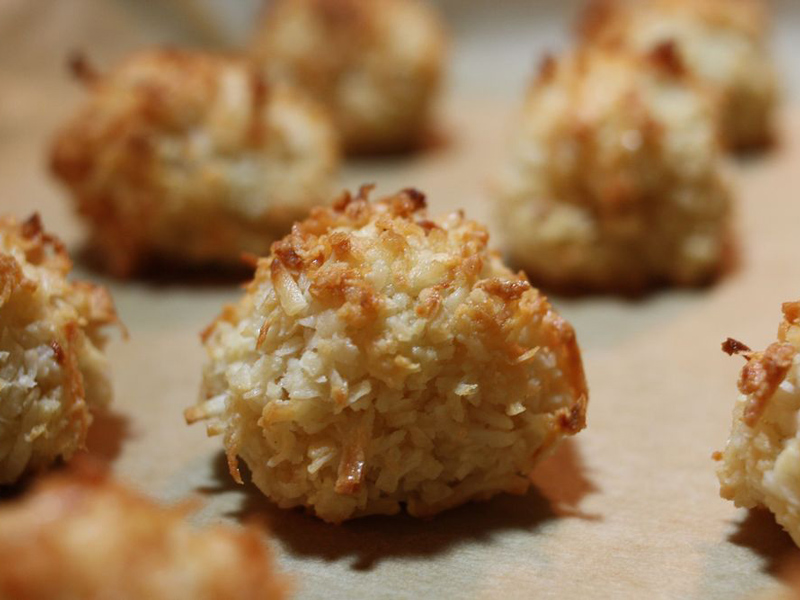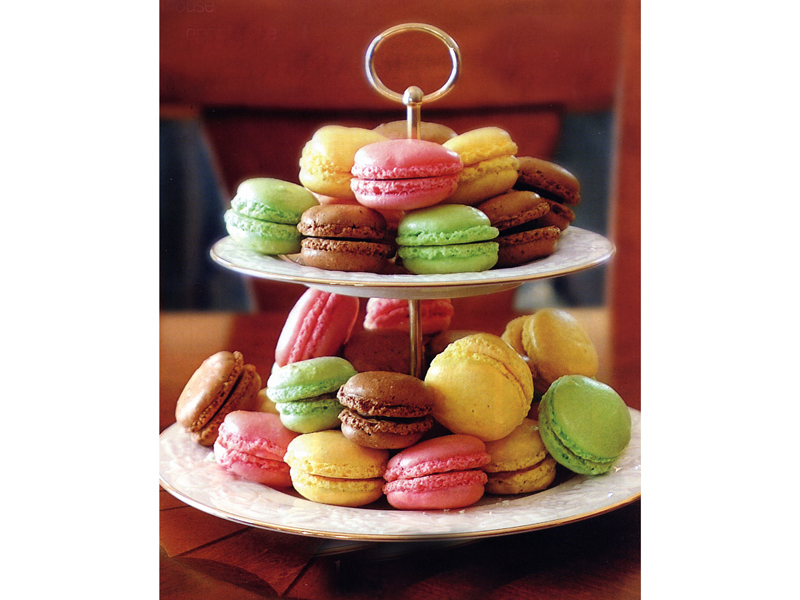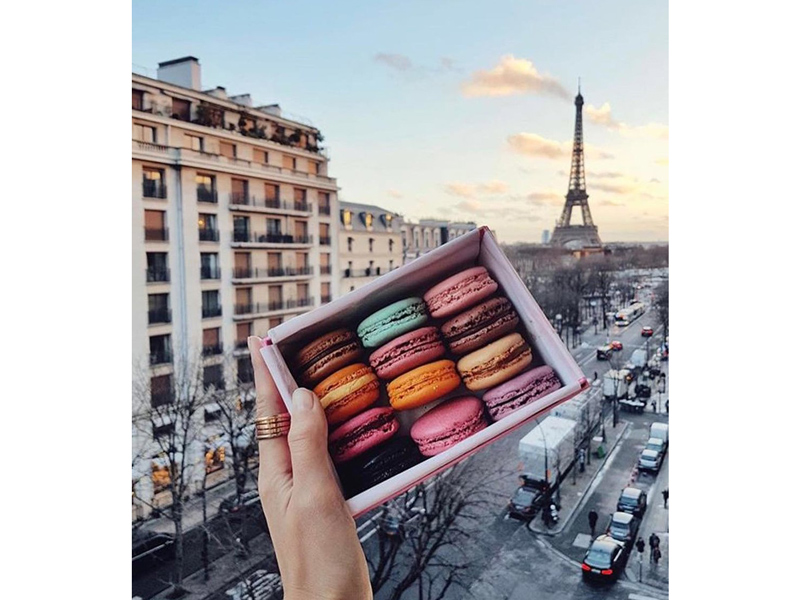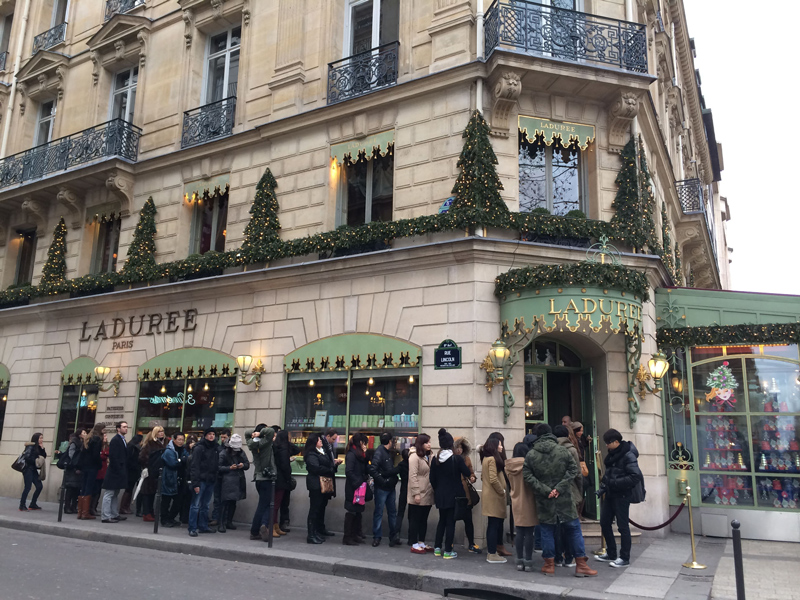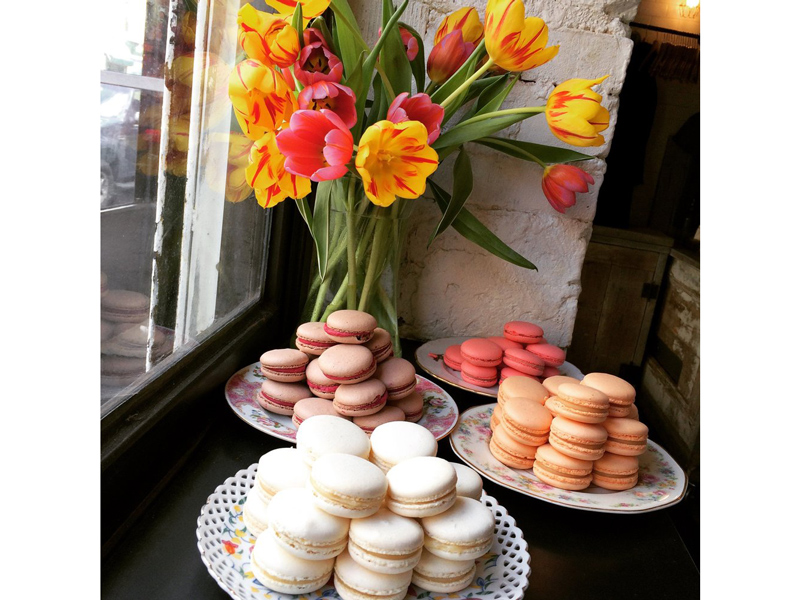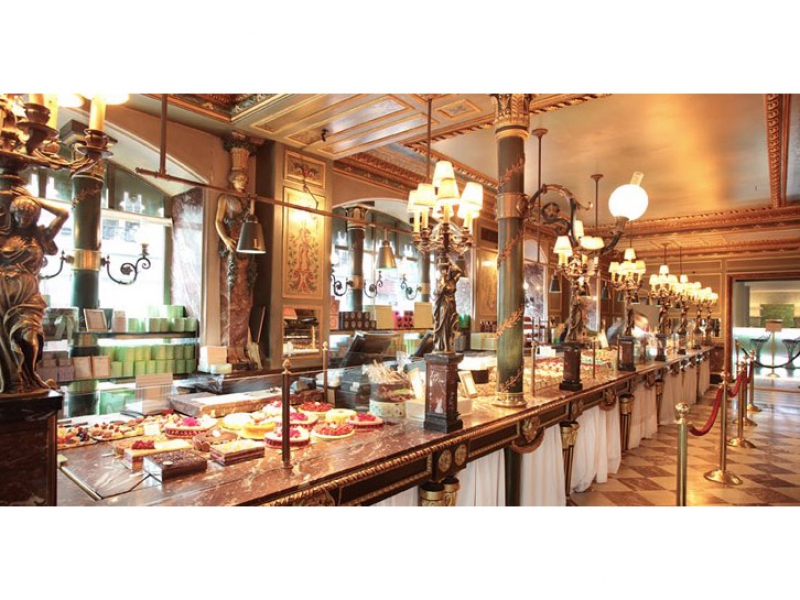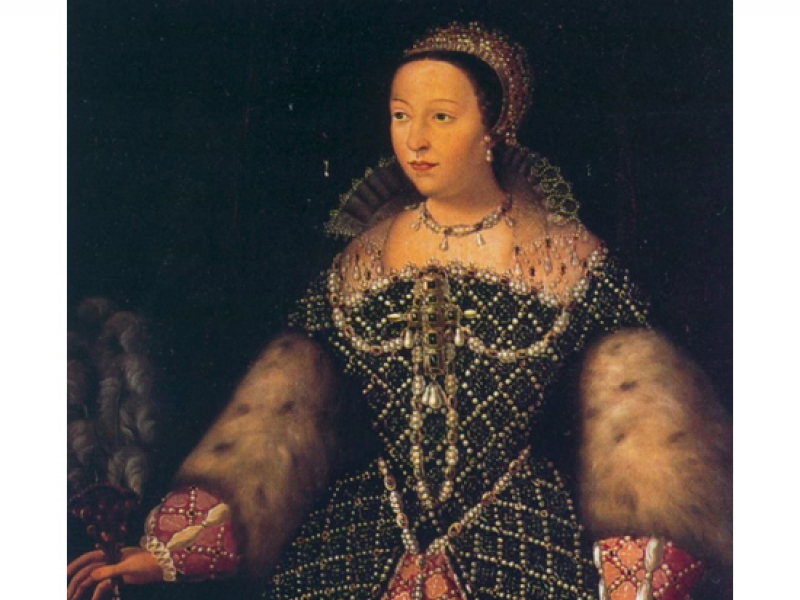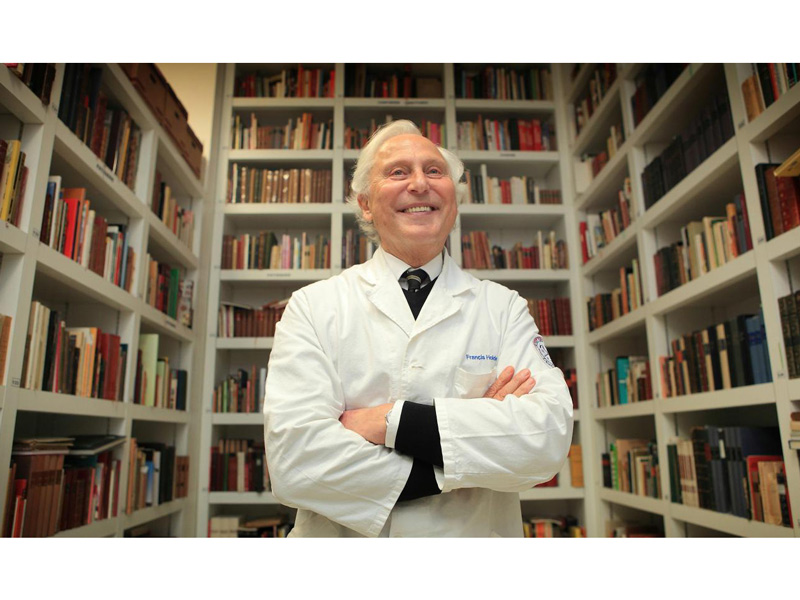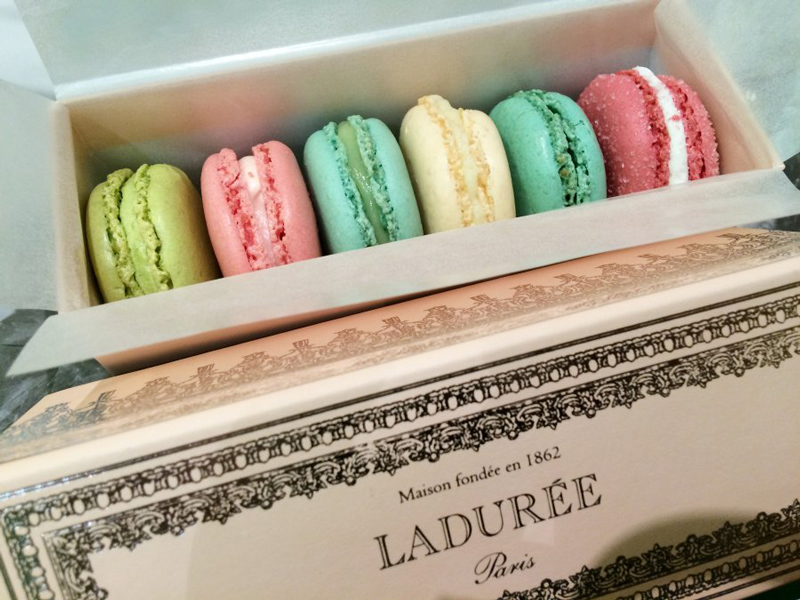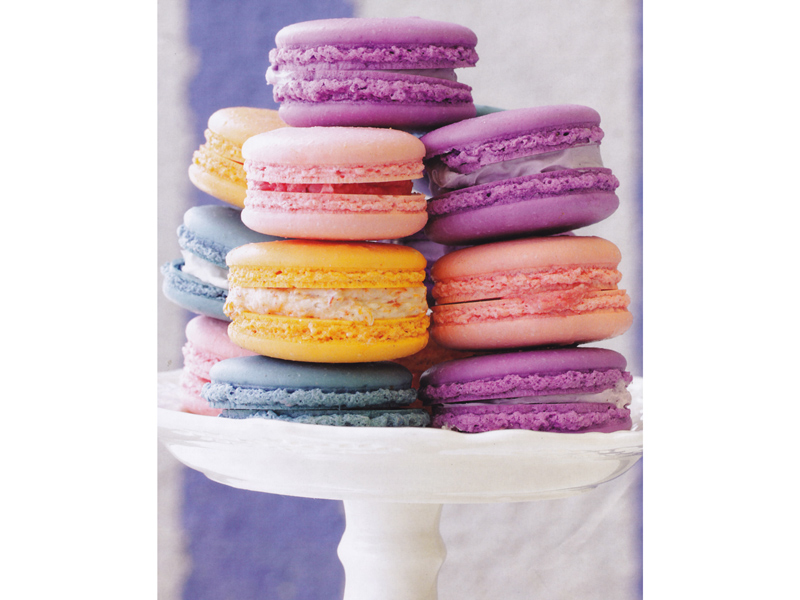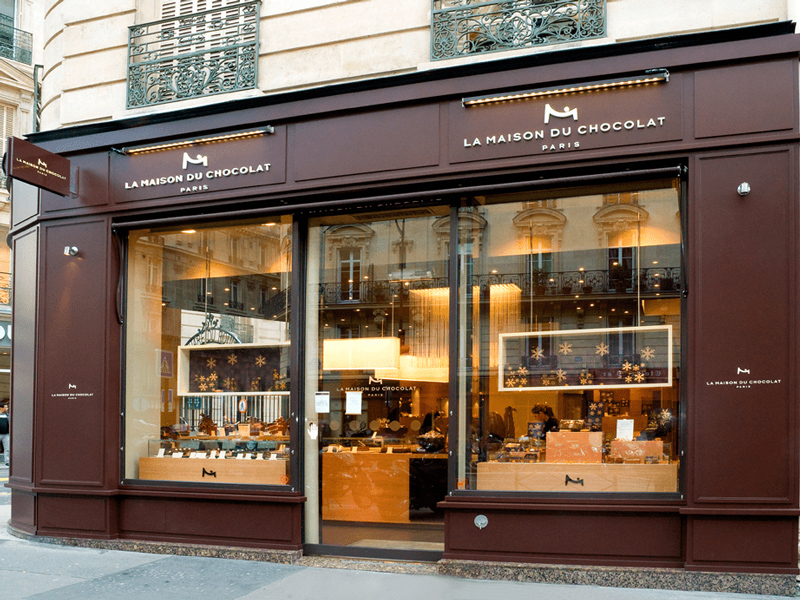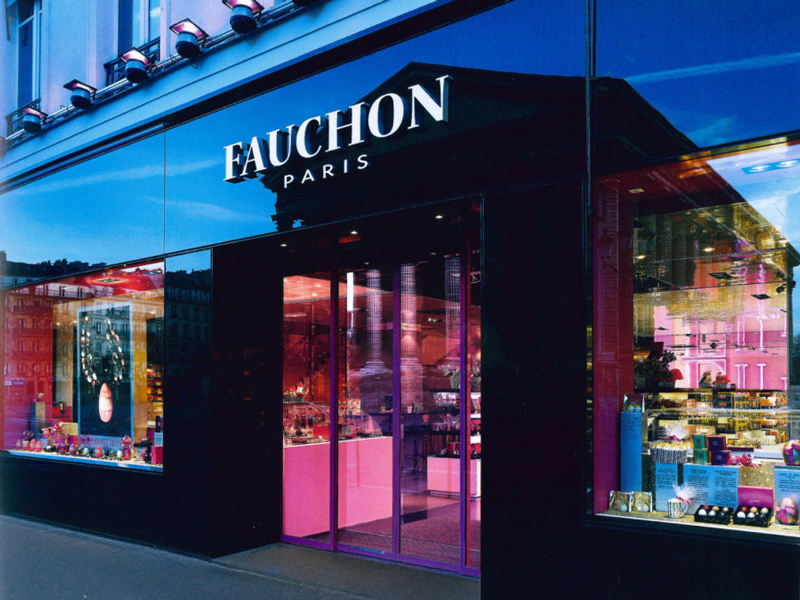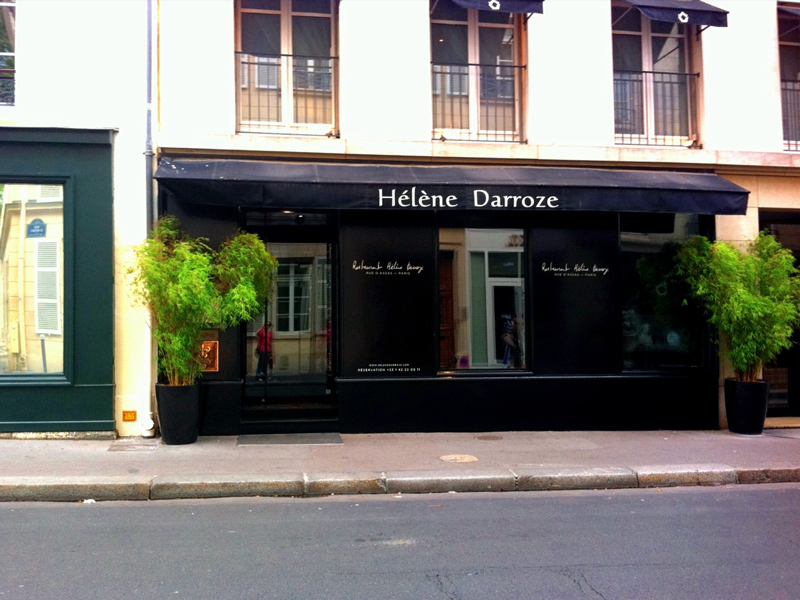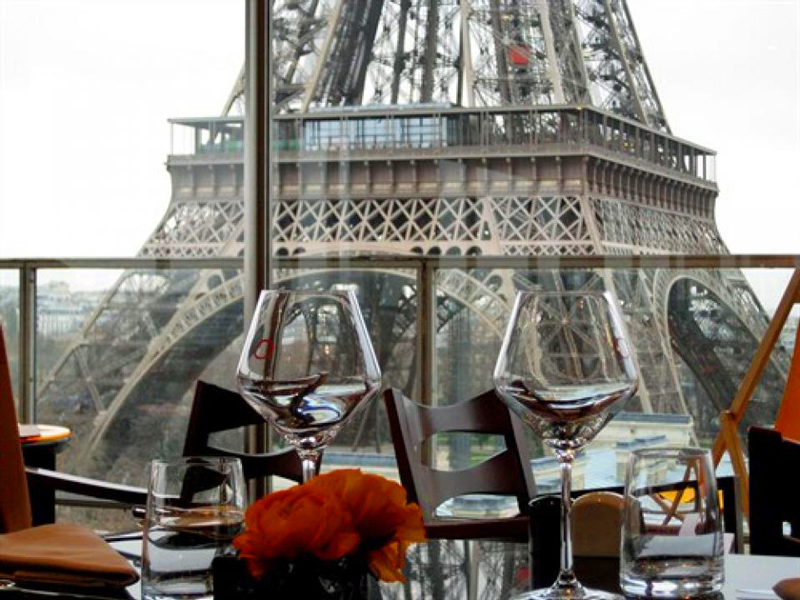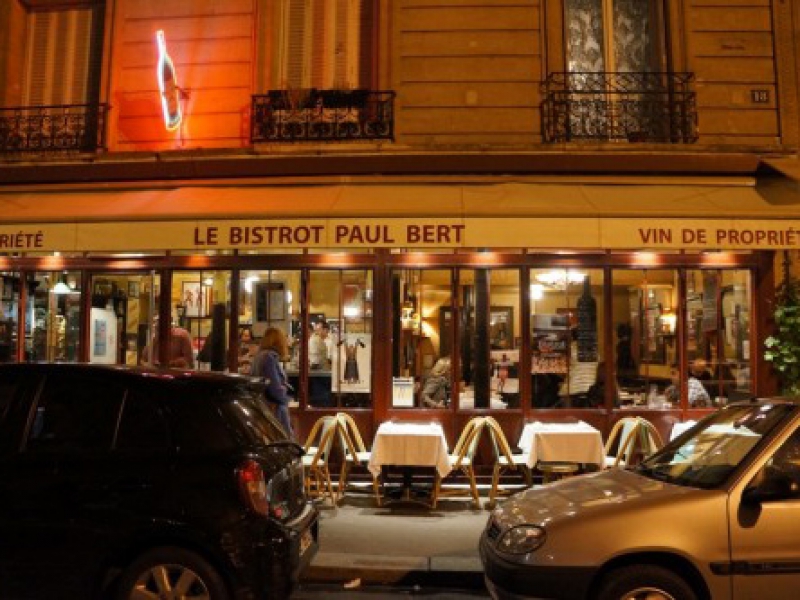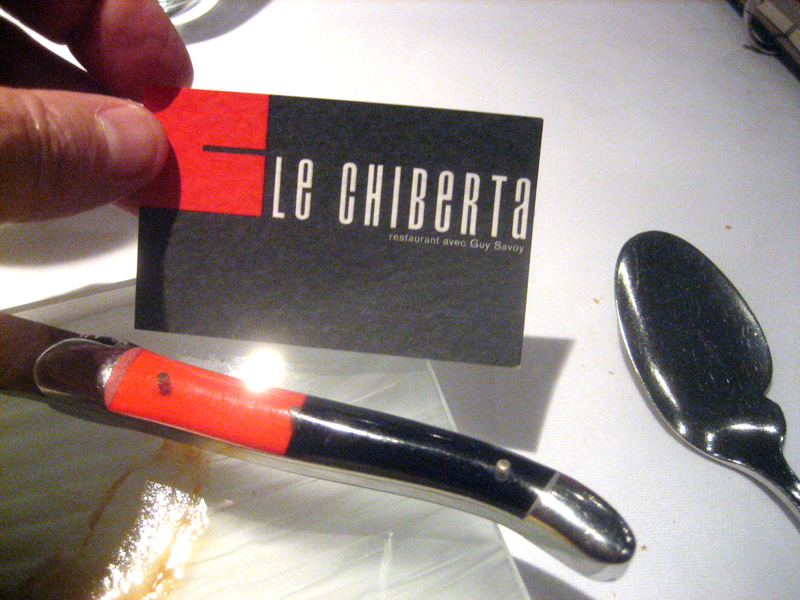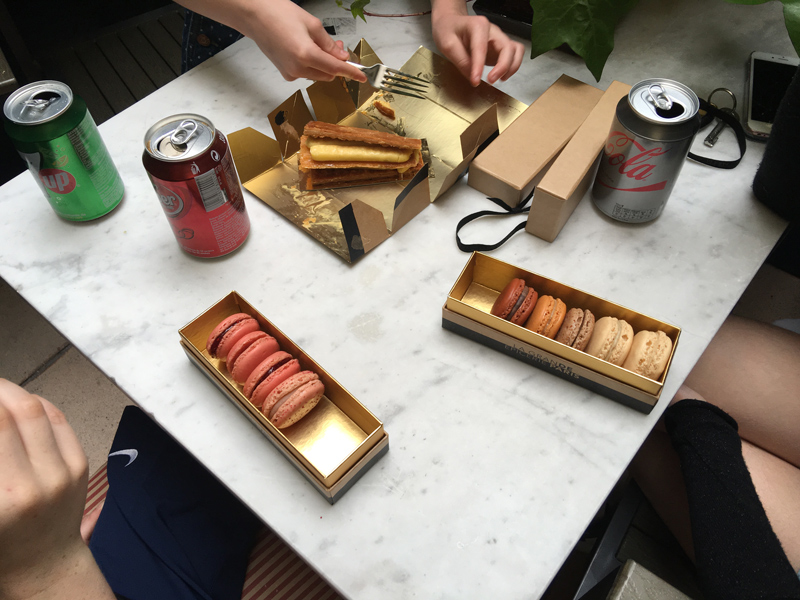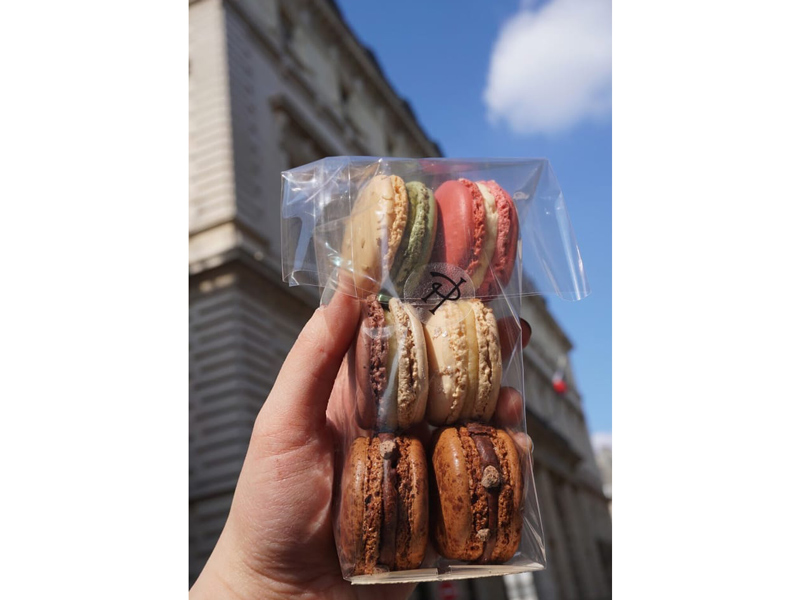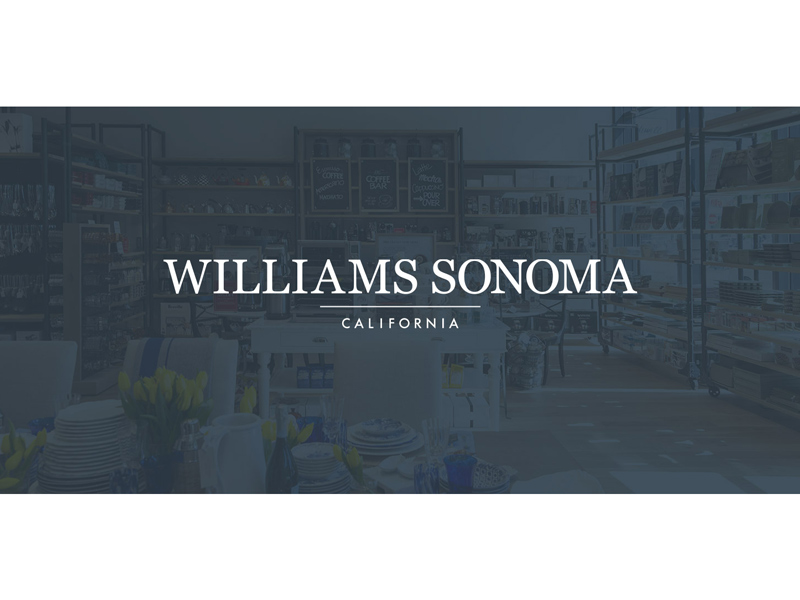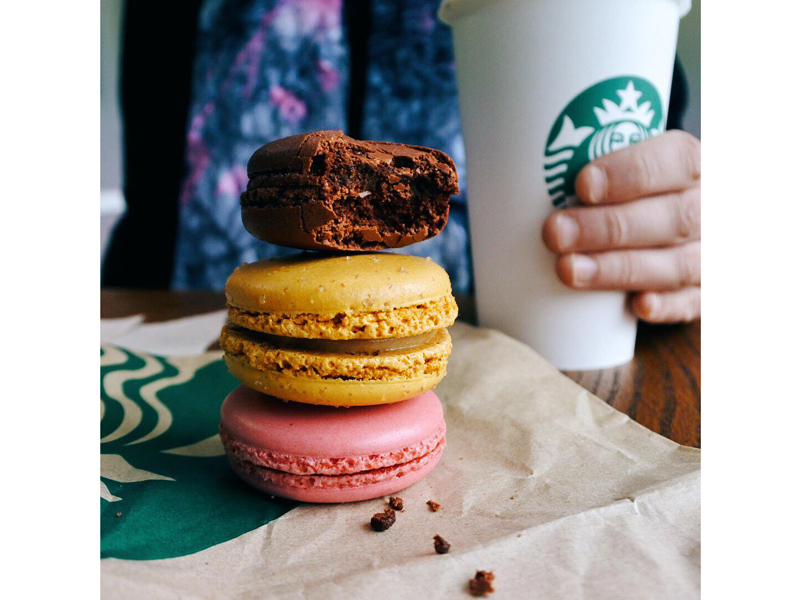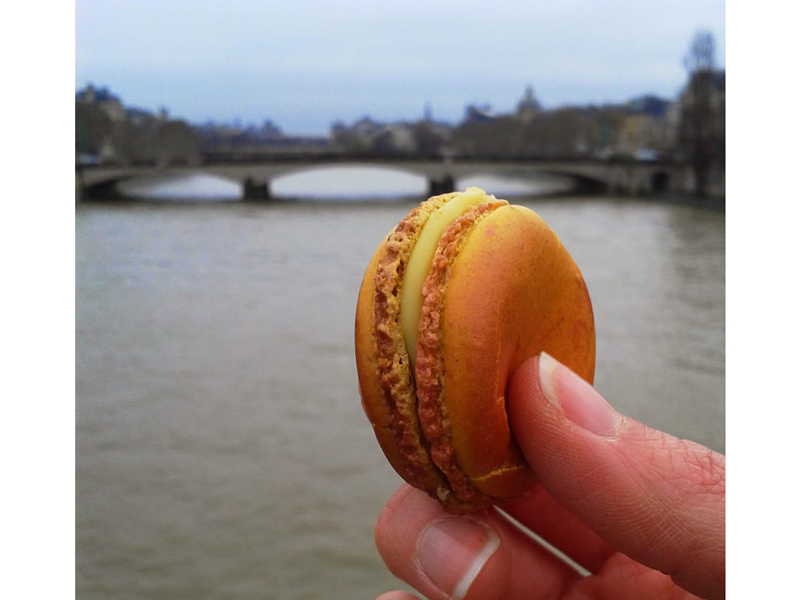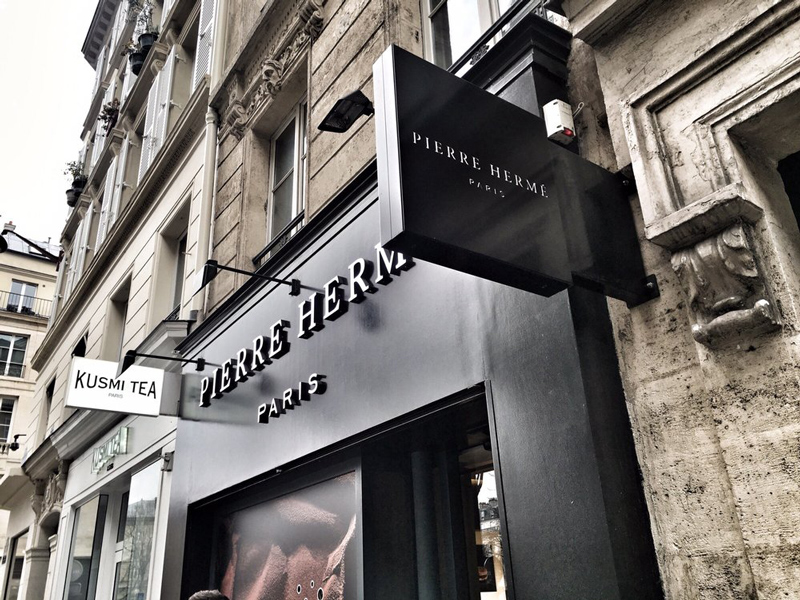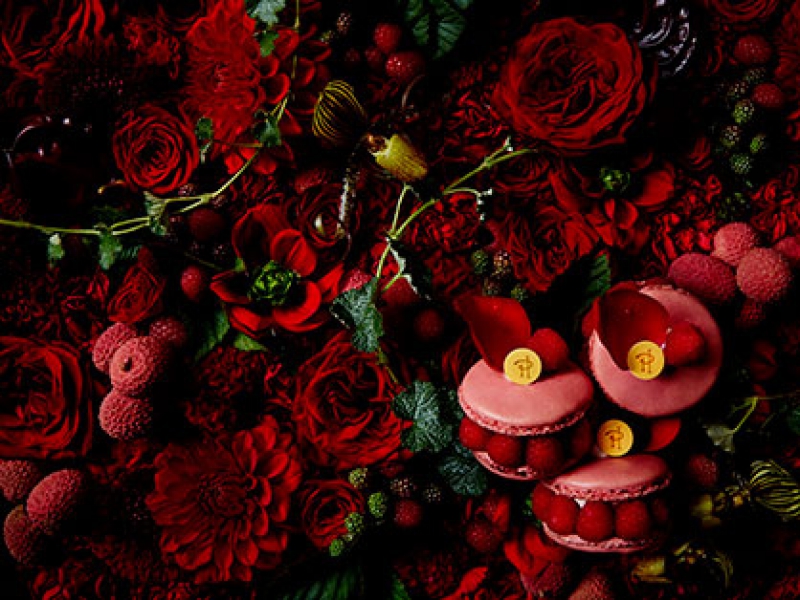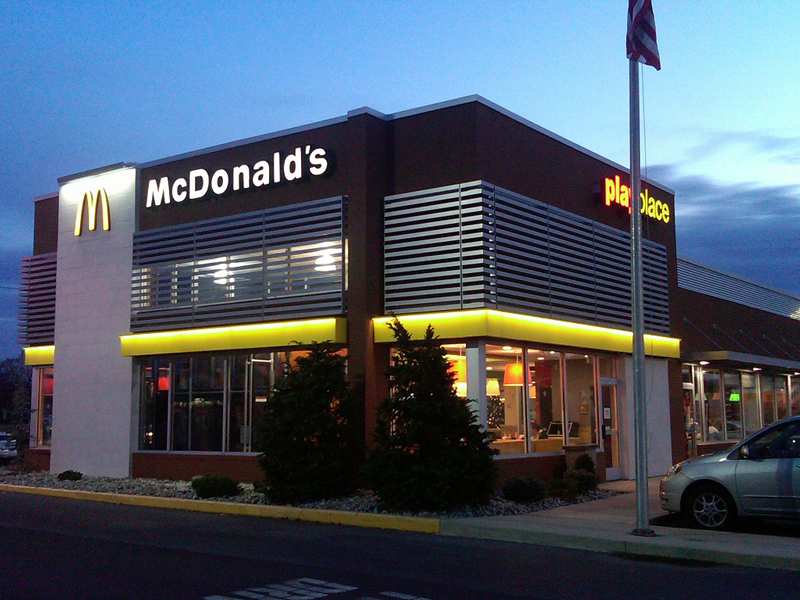Let’s get this out of the way right now.
There are MACAROONS and there are MACARONS….What is the difference?
The spelling is similar. And they’re similarly delicious. But they’re ENTIRELY DIFFERENT from each other.
Macaroons are a softish slightly lumpy cookie made with coconut, egg whites, sugar and almonds. They’re neither crunchy nor crispy.
Macarons are little sandwiches with meringue tops and bottoms and creamy ganache, pastry crème or jam fillings. The basic meringue shells are made with almond powder, confectioner sugar and eggs. All-natural flavors are incorporated and, as far as I know, no artificial colorings are used.
This post is about the latter: MACARONS.
Recently both the Houston Chronicle and Megan Garber of Atlantic magazine predicted that the macaron is about to replace the cupcake as America’s favorite treat. Others say that it already has.
Joanne’s and my macaron journey began some years ago in Paris. Needing a sweet treat in the late afternoon, we eyed a stunning display of pastel-colored mini-sandwiches, lined up by color in soldier-like rows in the window of a shop called LADURÉE, at 75 Avenue des Champs Elysées. It was a jewel box – grandly elegant, yet “lady-like” in scale.
Little did we know that we had just stumbled upon the most famous maker and seller of macarons in the whole world. We’d never heard of the place. In fact, we’d never even heard of macarons, let alone tasted one.
We, of course, tried some (well, several). They were surprisingly expensive little things, but boy, they were worth it. As I pulled out my camera (this was back in the days of cameras), the ladies behind the counter snapped at me.
“No photo!! Bad monsieur!!”
“But they’re so beautiful, your macaroons!”
“Not macaroons! MACARONS!”
I was confused. Humiliated. And…curious.
Here’s what I discovered: They French may view macarons as a national treasure, but culinary historians credit the Italians with inventing them. It’s thought that they were introduced to the French by Catherine di Medici’s Florentine pastry chefs, who accompanied her to France when she married King Henry II in 1533.
(BTW: We should note here that the Italians always claim ownership of French culinary delights. The French, of course, reject the idea – probably arguing that the Italians lack the necessary “refinement” to create something so delicately exquisite.)
For the next major development in the history of macarons, we have to jump ahead to 1862, when French luxury baker Louis Ernest Ladurée opened his shop and began selling the cookies to the public.
Flash forward another 130 years, to 1993, when a man named Francis Holder purchased the Ladurée recipes and brand. From that first little shop, Ladurée has grown to over 60 stores worldwide (10 alone in the United States), with outposts as far-flung as Casablanca, Qatar, and St. Tropez, as well as London, Miami and Bangkok.
Chloe Sorvino writes in Forbes Magazine that Holder’s macaron plant in the Paris suburb of Lille produces 30,000 meringue shells per hour from a machine with a conveyor belt the length of two football fields.
Ladurée is, by far, the leading seller of macarons in France and across the world, but it’s hardly the only purveyor.
When we brought our grandkids to France, they took a tour of Parisian chocolate shops, one of which, Maison du Chocolat in the Marais, produces macarons every bit as lux as those of Ladurée and charges a similar price – about 3 euros each.
Of course, the world-famous Fauchon brand is in on the act, selling macarons so beautiful they fuse fashion and food. (Visit their flagshop store on the Madeleine in the heart of Paris.)
Restaurants serve their fair share of the little cookie as well, sometimes as part of a dessert, other times as petit fours. Joanne and I have indulged at HELENE DARROZE across the street from the St. Sulpice cathedral of Da Vinci Code fame; and at CLUB GASCON in London’s Smithfield Market (where we were surprised with Bailey’s Irish Cream meringue shells and savory ones with foie gras filling).
LES OMBRES in Paris not only offers a spectacular view of the Eiffel Tower – it treats guests to salted caramel macarons filled with green garlic cream (a nice counterpoint to the usual sweetness of traditional cookies).
Finally, at the meat-centric bistro, PAUL BERT, you can order an enormous macaron dessert featuring a raspberry shell generously filled with fresh raspberry ganache. We split one.
In a nod to Italy, LE CHIBERTA, Guy Savoy’s Italian place near the Arc de Triomphe, serves up tiny Amaretto versions as petit fours.
Each evening in Paris, our grandkids made runs to the close-by food halls of Bon Marché and returned with macarons – six each – as their second dessert of the night.
Now, a warning – actually, two warnings:
First: Don’t buy and put macarons in a bag. They are fragile and will crush. You need to splurge on little boxes for safe transport.
Second, top-notch versions of macarons are expensive. In Paris, they’ll run about $3.75 each, here in the U.S. about $2.50. But don’t cheap out. Inferior versions are made with almond extract, not real almonds, and they’re just not very satisfying.
The good news is that high-quality macarons are readily available here in America. Williams Sonoma has ‘em, for example. PATISSERIE 46 in Minneapolis does a nice job as well. And the ones at Lunds/Byerly’s are damn good, too.
Of course, you can also find macarons at Starbucks and Whole Foods, and at Costco and Trader Joe’s. Even Target stocks them.
But now…back to Paris.
A Ladurée and Fauchon baking alumnus, PIERRE HERMÉ, has recently made a bid for macaron supremacy. His 20 or so Paris shops are a smart, modern and sleek contrast to the slightly “fussy” (dare I say “girlie”) design of Ladurée.
But the main difference to me is the boldness and creative combos of Hermé’s creations. Eschewing the pastel palette of Ladurée, his macarons resemble psychedelic Oreos.
Flavors go well beyond chocolate, vanilla and salted caramel. And while Hermé offers all the usual suspects, you might also find rose petals and raspberry…blueberry, ginger and lime…orange blossom, praline and chantilly crème…olive oil, mandarin orange and cucumber…or fig and goat cheese.
I really do not know if macarons have replaced cupcakes as America’s favorite and most popular treat. But I do know this. When we were in Paris last year, we found ourselves buying macarons at McDonald’s.
WATCH OUT, CUPCAKE!!!!
WTF
PHIL
